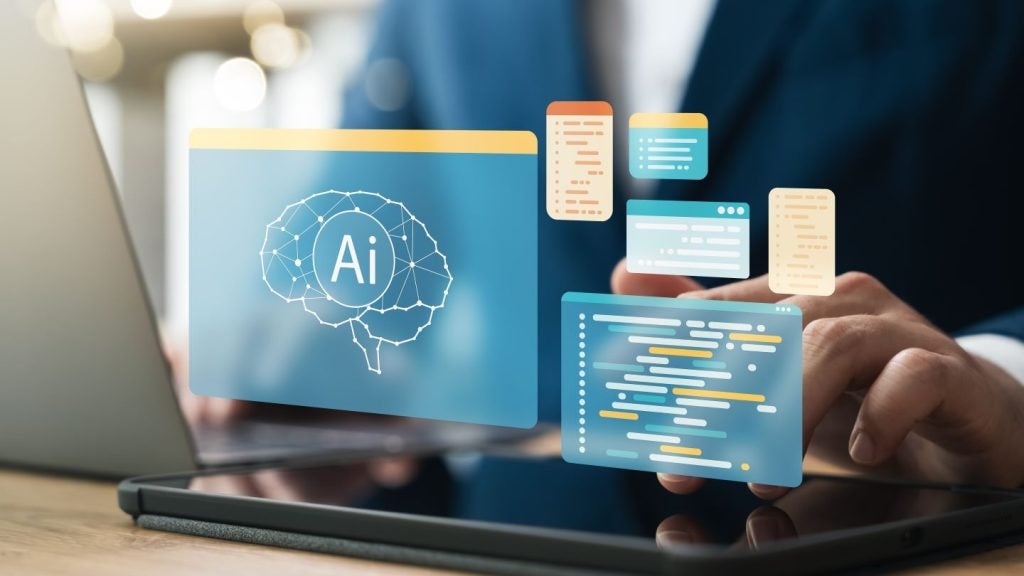
As artificial intelligence (AI) grows increasinlgy ubiquitous, there’s no question that it is disrupting a myriad of industries.
According to forecasts from GlobalData, the total AI market will be worth $1trn by 2030, with it having grown at a compound annual rate of 39% from $103bn in 2023.
GlobalData’s recently published AI report unpacks how the technology is affecting businesses and what challenges the industry must navigate.
Of the AI market in 2024, Josep Bori, research director for thematic intelligence at GlobalData and author of the report, told Verdict: “From an adoption perspective, we think the early excitement will taper off and companies will focus on the return on investment of using AI technologies, with particular consideration of risks around rapidly evolving AI regulation, the carbon footprint of the large AI models, as well the explainability of the outputs.”
Generative AI as a force of creative destruction
Since the launch of ChatGPT, generative AI has emerged as one of the types of the technology with the most buzz around it. Over the last couple of years, it has become increasingly integrated into a variety of products and business offerings.
GlobalData’s report identifies generative AI emerging as a force of creative destruction, prompting a reorganisation of the business landscape.
How well do you really know your competitors?
Access the most comprehensive Company Profiles on the market, powered by GlobalData. Save hours of research. Gain competitive edge.

Thank you!
Your download email will arrive shortly
Not ready to buy yet? Download a free sample
We are confident about the unique quality of our Company Profiles. However, we want you to make the most beneficial decision for your business, so we offer a free sample that you can download by submitting the below form
By GlobalData“In economics, creative destruction is typically described as the dismantling of long-standing practices in order to make way for innovation and is considered a driving force of capitalism,” explained Bori.
“Generative AI has the potential do massively disrupt, if not destroy, certain business models, but at the same time it opens many new opportunities.”
“Consider for instance language translation, which generative AI is fairly good at. Arguably this will very negatively impact businesses that made a living from translating documents, charging by the number of pages or words. At the same time, one could envision a futuristic consumer electronics product that provides real-time translation allowing travellers to communicate with the local population, a bit like Star Trek’s universal translator.”
Challenges for the AI industry
AI is becoming increasingly integrated into life-changing decisions such as welfare payments, mortgage approval, insurance policies and medical diagnoses. As Bori noted, in these scenarios “transparency and explainability are essential”.
Noting the potential for AI to suffer from bias learnt from training data sets, Bori warned: “Unless proper measures to mitigate bias in the data are adopted, AI may just lead to a perpetuation of past human biases, from racism to sexism and ageism.”
Another issue facing the AI industry is the large power consumption of large language models (LLMs), which is at odds with international aims of decarbonisation.
Recent news of Google’s emissions climbing 50% in five years due to AI energy demand highlighted the huge amounts of energy demanded by AI.
Referring to the AI Index Report by Standford University, Bori explained that the carbon dioxide-equivalent emissions produced by GPT-3 stood at 502 tonnes in 2022.
“We believe that as the carbon footprint impact of LLMs becomes more transparent, organizations will need to consider it when selecting AI delivery models and in real-time orchestration of AI-enabled services,” he said.








